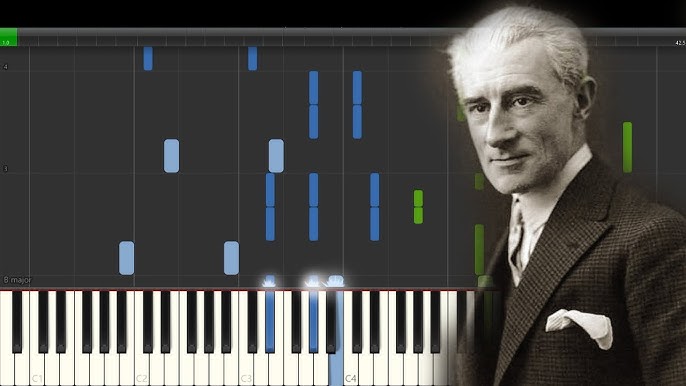Composer of Bolero: Who is Maurice Ravel?
During World War I, he was not drafted into the army due to his age and health problems, but he worked as an ambulance driver. After the war, he traveled as a conductor. He attracted particular attention in the USA, where the effects of American jazz music, which he met there, can be felt in his later works.

French composer and pianist. He was born in the Basque region in 1875 and grew up in Paris. He started taking his first music lessons on the piano at the age of seven. He gave his first public concert at the age of 14.
He inherited his musical talent and fondness for details from his father. Because of his attention to detail, composer Stravinsky described him as the Swiss watchmaker of music.
In his compositions, he created small blocks of music, like the parts of a clock, and combined them to create more complex structures.
In 1897, he began studying with Gabriel Fauré, one of the most famous composers of the period, at the Paris Conservatory. Two years later, he composed the work that would make his name heard for the first time, "Pavan for a dead princess".
Joseph Maurice Ravel (7 March 1875 – 28 December 1937) was a French composer, pianist and conductor. He is often associated with Impressionism along with his elder contemporary Claude Debussy, although both composers rejected the term. In the 1920s and 1930s Ravel was internationally regarded as France's greatest living composer.
Ravel and Claude Debussy were mutually influenced by each other. For this reason, their names are often mentioned together in music history. Both were inspired by the paintings of the impressionist painter Claude Monet.
Ravel was also influenced by world music such as American Jazz, Asian music, and European folk songs. The most notable work among his vocal works, Scheherazade (1898), shows his interest in Eastern music, but he focuses mostly on Spanish music.
He composed the first of his two piano concertos for the left hand only in 1930, upon the request of pianist Paul Wittgenstein, who lost his right arm in the war. The second piano concerto, completed in 1931, is for two hands and is called Scheherazade. The most well-known works of Spanish music are Ravel's best-known orchestral work, Spanish Rhapsody (1908), and the last ballet music he composed, Bolero (1928).
The Russian composer Stravinsky and the Russian Ballet Company, who were in Paris between 1910 and 1920, influenced his compositions. He turned to a more traditional style and produced neo-classical works. Among the many famous works he wrote during this period: are the opera "The Spanish Hour", and the ballet "Dafnis and Kloe" written by Sergey Diyagilev for the famous Russian Ballet group and the Spanish Rhapsody.
During World War I, he was not drafted into the army due to his age and health problems, but he worked as an ambulance driver. After the war, he traveled as a conductor. He attracted particular attention in the USA, where the effects of American jazz music, which he met there, can be felt in his later works.
Ravel rejected the Légion d'Honneur award from the French government in 1921 but accepted the honorary doctorate from Oxford University in 1931. He educated a small number of students. His main students were Vaughan Williams and Maurice Delage.
Among the fruits of these years are his second opera called "The Child and the Magicians", his wonderful orchestration of the famous Russian composer Modest Musorgski's piano piece "Paintings from an Exhibition", his famous violin piece "Chigan" and "Bolero", which made the composer's name known all over the world. Includes orchestral work.
Ravel began to experience some neurological problems in 1927. A few years later, he encountered muscle problems and aphasia (loss of speech). Over time, symptoms of dementia developed, and his condition worsened after a traffic accident in 1932. Due to these illnesses, he could not produce any work. He died in 1937 at the age of 62 as a result of an unsuccessful brain surgery.
According to International Copyright Law, Ravel's works entered the public domain in many countries on January 1, 2008. Today, Maurice Ravel's works are constantly performed in concert halls around the world. Bolero, one of the composer's most famous works, has a very important position in the history of music. Bolero is a Spanish dance. One of the most striking features of the work that Ravel wrote using the name of this dance is that the music is built on only two melodies. These two melodies are heard mutually. The melodies announced by a single instrument, accompanied by the snare drum that gives the rhythm, eventually spread to the entire orchestra as the sound level gradually increases, and Bolero takes its place among the longest-lasting and impressive sound rises in the history of music.
